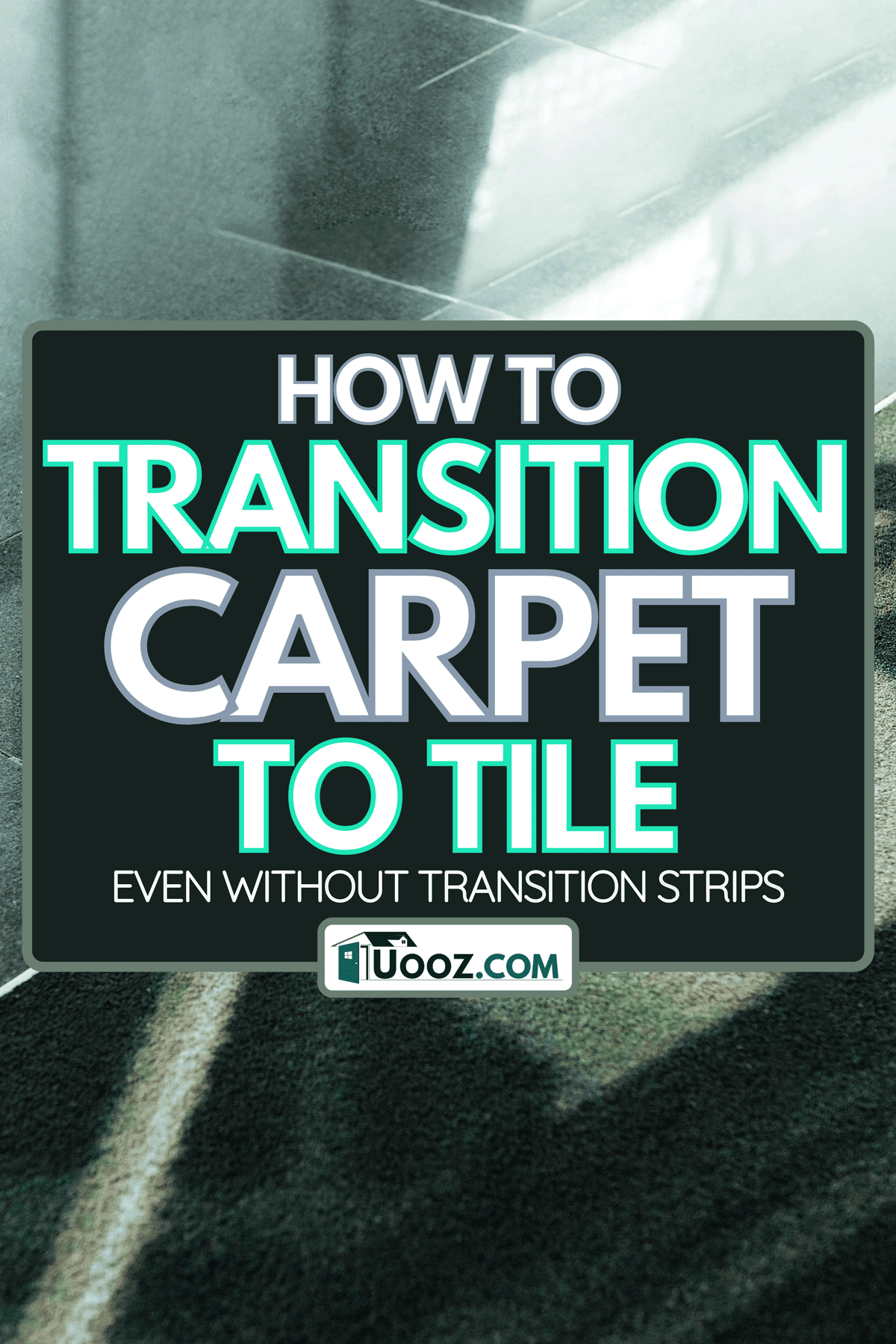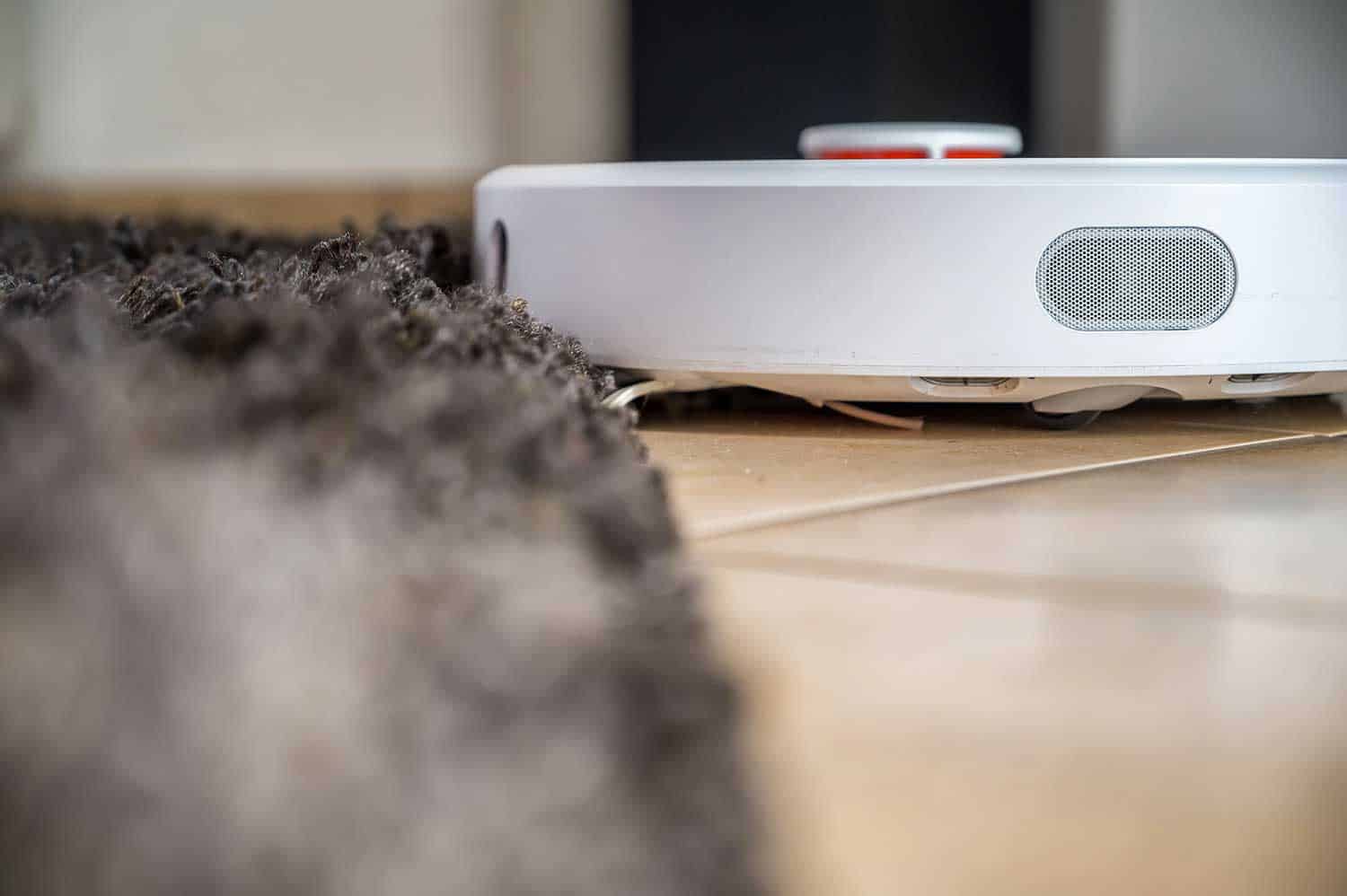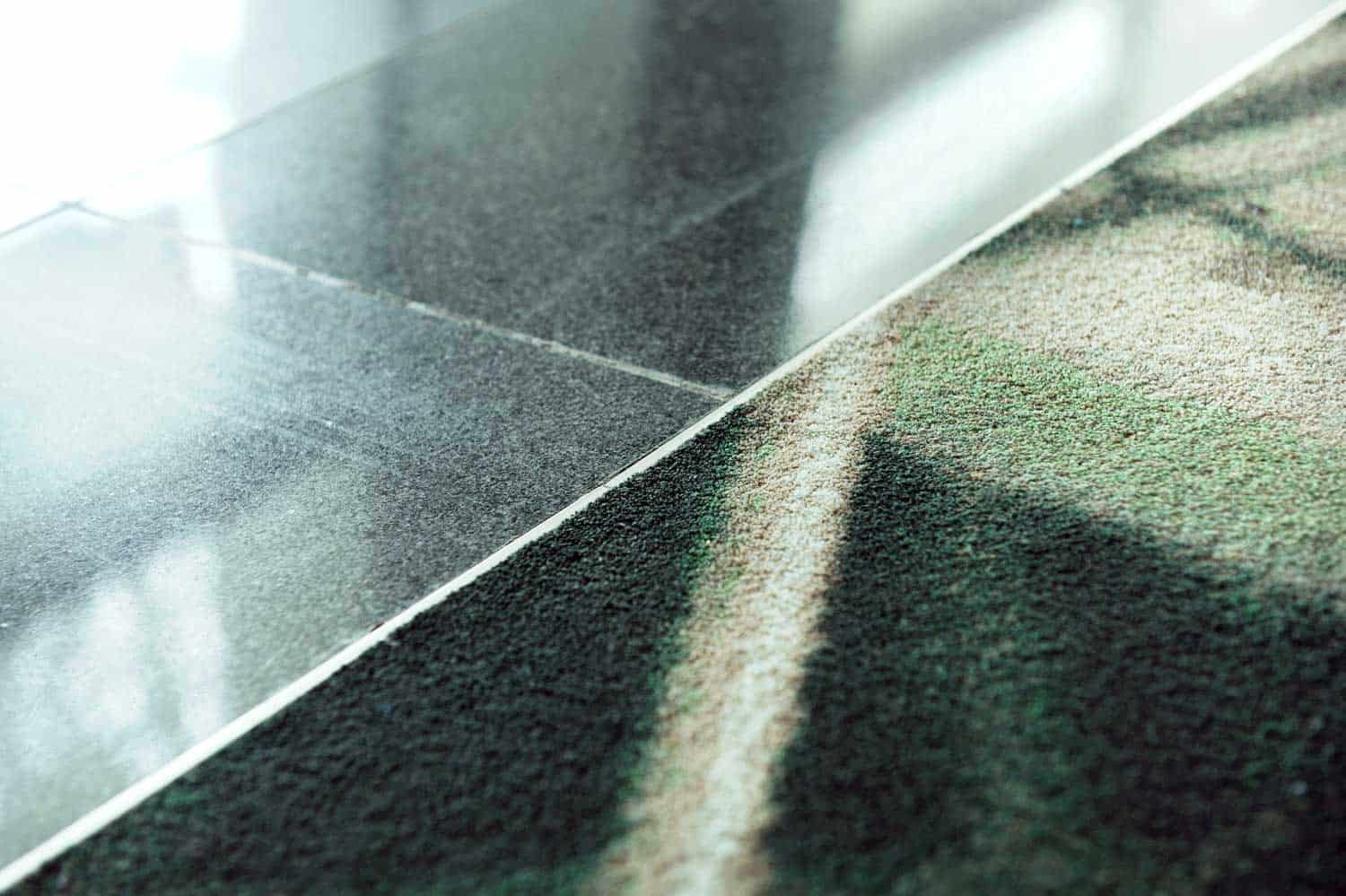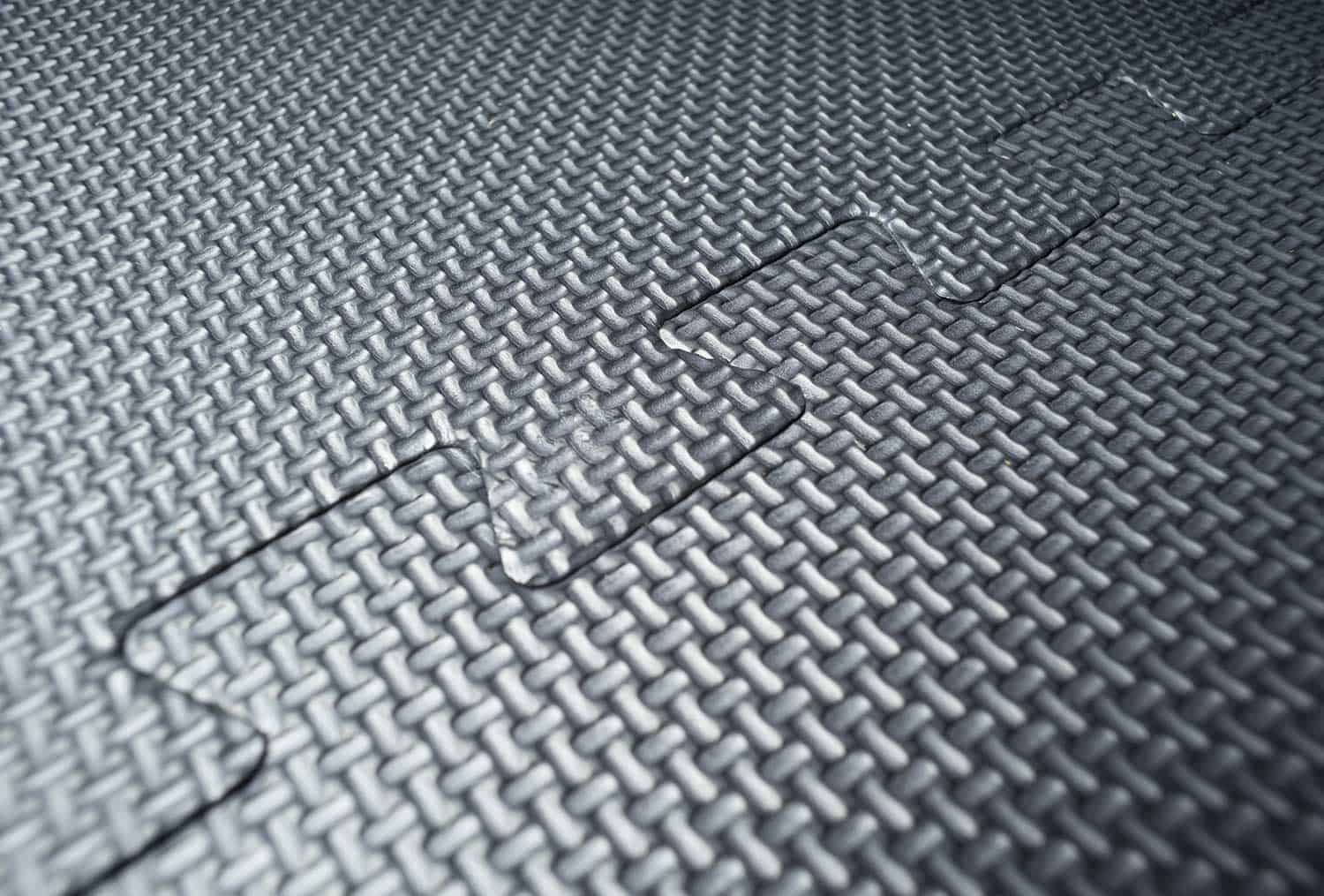There are many reasons to transition to tile flooring from carpet. Though carpet can be cozy and very comfortable, it can also be harder to keep clean, especially when it comes to spills. So how do you transition from a carpeted room to one with tile? And how do you do this without transition strips? We have researched the best methods for this type of installation.
To transition carpet to tile:
- Measure the distance between the two flooring types
- Prepare and install the transition piece
- Attach a tack strip (optional)
- Place the carpet on top of the tack strip
- Trim the carpet
Perhaps the most challenging part of laying carpet next to tile is getting the measurements right. Whether you're using a transition strip or not, it's imperative that you measure the distance between the two flooring types. This will ensure that there is enough space to make a smooth transition without any gaps. Continue reading to learn how to do it.

Steps To Transition Carpet To Tile
When installing the different flooring types next to one another, be sure to account for the edges of the tiles, as you don't want them to be exposed. Not only will this look unsightly but it can be a tripping hazard and potentially damage the tile.

Things you'll need:
- Carpet kicker
- Tack strip
- Transition strip
- Measuring tape
- Box cutter or carpet shears
- Hammer
- Screwdriver
1. Measure the distance between the two flooring types
At this point, you should have already laid both the carpet and the tile on the floor. It doesn't matter if you install the carpet first over the tile, but you'll want to leave an overhang of 1 1/2 inches between them for the transition space.
This is needed even if you aren't using a transition strip. Whichever flooring type you lay last, make sure that the edge of the flooring is cut to size. If you installed the tile last, be sure to clean off the edges to remove any excess mortar dust.
2. Prepare and install the transition piece
If you're using a transition strip, cut it using a hand saw or reciprocating saw. If you want to cut notches on the ends of the strip, it's best to use a coping saw to assist with matching the profile of your door jamb. This will make it fit easier.
Find this coping saw on Amazon.
After cutting the transition strip to fit, place it between the end of the carpet and the tile area. The top of the transition strip should be covered by both flooring types.
Next, cut the flooring types back so that they are on the edge of the strip. You can cut the carpet with a box cutter and the tile with a glass or tile cutter.
Note that the last row of tile before the transition strip should not have adhesive on the back of the tiles or the flooring beneath them. You will need to fit these pieces into the space first. So be sure to cut them to size before securing them on the floor.
Place the transition strip on top of both the tile and the carpet and nail or screw it into place. It's even helpful to place a bit of adhesive either on the floor or on the bottom of the transition strip beforehand as well.
3. Attach a tack strip (optional)
If you prefer a seamless transition without a transition strip, you'll need to use a tack strip for the carpet. For this method, you'll still need to leave a 1 1/2-inch space between the tile and the carpet. However, instead of placing the transition strip between them, place the tack strip instead.
If you're going to use this method, it's best to install the tile first if possible. After both flooring types have been installed, place the tack strip and the space between them and nail it down to the floor.
If you're using glue instead of nails, be sure to let it dry for the recommended time before moving to the next steps (though it's recommended to use nails in addition to glue).
Find this tack strip set on Amazon.
4. Place the carpet on top of the tack strip
Next, grab your carpet kicker and set it down near your work area. Then, take the edge of your carpet and lay it over the tack strip. Use the carpet kicker to stretch the carpet across the nail strip.
Stretching the carpet will help to push the fibers of the carpet further into the nails on the tack strip. After stretching the carpet toward the strip, you should have anywhere from 2-3 inches laying over the tack strip.
Find this carpet kicker on Amazon.
5. Trim the carpet
Next, grab your box cutter or carpet shears and cut away any extra carpet overlapping the edge of the tack strip. It may be best to position the box cutter on the side with the tile; this way, you'll have a clean cut.
Finally, take a putty knife to gently tuck the carpet edges. If there are any frayed carpet edges, be sure to trim them with the box cutter or a pair of shears.
Find these carpet shears on Amazon.
How do you finish carpet edge where tile meets?

There are a few different methods that you can apply when creating carpet-to-tile transitions. Let's look at the most common ones:
Reducer Strip Transition
The great thing about reducer strips is that they come in a variety of styles and options. They provide an easy and seamless way to bridge the gap between the carpet and tile flooring.
You simply place them directly between the edges of the two flooring types and either nail them down or use glue to attach them to the subfloor. These T-shaped strips are convenient and perfect for areas where you have little space between the flooring types.
Z-Bar Transition
A Z-bar transition strip is probably one of the most common tools to go from carpet to tile. This option is also seamless, and it adds more security to the transition.
The Z-bar keeps the carpet neatly tucked underneath it. It's different from the tuck-in method in that you can install a tack strip on top of it.
The "Tuck-in" Transition
This is probably the quickest and least expensive method. The "tuck-in" method allows you to use a tack strip to merge the carpet to the tile flooring.
This allows for a seamless transition, and it requires less work. For this method, you'll need to leave enough space for you to lay the carpet edges over the tack strip and stretch it afterward.
How much gap should a transition strip have?
The amount of space that a transition strip should have depends on the size of the strip. However, most strips will need anywhere from 1/2 an inch to 1 1/2 inches of space. If you're installing new flooring, you'll need to account for this space in your measurements for the flooring type.
Can you put interlocking tiles over carpet?

No, interlocking tiles are typically not recommended for use on carpet. Though installation is possible, the 25-millimeter thickness of these tiles doesn't provide enough cushioning for them to interlock securely.
However, if you have carpeting that is "commercial flat," it may be possible, but it will be fairly difficult to install. So, the plusher the carpet, the more problematic and difficult the tile installation will be.
How do you lay carpet tiles over carpet?
It's uncommon for someone to lay carpet tiles over the carpet as opposed to a subfloor or floating floor. Laying the tiles over a carpeted floor will make the flooring more unstable.
However, if you install a plywood subfloor or mechanical floating floor, performing this installation will be more worthwhile. Not only will you have more solid and supportive flooring but you won't run into nearly as many issues during the installation process.
Wrapping Things Up
We hope this post has helped explain some options available for transitioning carpet to tile and vice versa. As you can see, you can use the tuck-in method, Z-bar strips, tack strips, or reducer strips for the installation.
Be sure to check out these other posts before you go:




